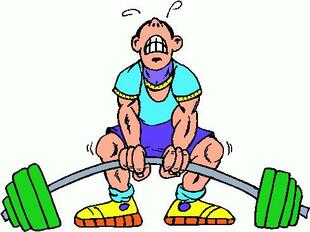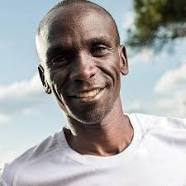
Check out what my dancers, singers, musicians and yoga practitioners are saying about our work together!
This is the only thing that I have done for body awareness, health and efficiency that I could call upon without having to go to someone else to fix me so it was really freeing in that I didn’t need to spend the money and time on massages especially with our busy lives, traveling dancing and everything that we do. With Bette, I was still able to use this practice in my daily life, my dancing and in my teaching.
Erin Marie Aiken – Professional Ballroom Dancer/Teacher
I began my study of ballet as a young child. Over the years as a student, dancer, and teacher, I acquired habits that did not benefit me, but it was not until I was an adult, teaching ballet full‑time, that these improper habits started to cause pain in various parts of my body. Contacting Bette was one of the best decisions that I ever made. I had always been told that I was too tense as a dancer. Working with her helped me to identify unnecessary tension, but more importantly she helped me to release the tension and gave me ways to think so that I could continue to work/live with an awareness of the unnecessary tension in my body. By focusing on the Alexander Technique principals, Bette essentially changed my entire approach to ballet, I now feel so much more at ease while I am dancing – I certainly have more energy and am in much less pain. As an added plus, my students have benefited as well. I am better able to teach them how to move with ease and grace from a very young age – I teach in a manner that will stop habits of tension before they can ever take hold.
Susan Sorota, Teacher of Ballet
I was diagnosed with scoliosis as a young teenager. For all of my adult life I have had back discomfort related to scoliosis. My back has been especially uncomfortable when doing normal every day activities such as sitting in folding chairs, sleeping on soft beds in hotels and taking road trips in the family car. Over time I came to accept my back issues as a given – and I had no expectation that anything would change because my scoliosis wasn’t going away. But all of that did change when I started working with Bette and learning the Alexander principles. Over the time I have worked with Bette, my back discomfort has decreased significantly – I thank Bette for imparting her knowledge of Alexander principles and encouragement in a way that has changed my physical well being, as well as my dancing for the better!
Anne, Pro-Am Ballroom dancer
I had no idea how profound this work would be! Of course most of it has to do with Bette’s expertise and innate sense of what I need. It was like magic – my head no longer felt heavy and my jaw, shoulders and neck were free of tension. Through common sense and subtle reminding without actually DOING, I have been able to address my unconscious habits which have freed my body and thus my emotional state considerably. I highly recommend this work for everyone who moves!
Susan Borofsky, Singer, Yoga Teacher
“Studying AT with Bette, I am no longer suffering from a repetitive strain injury (I can play the saxophone pain free again) and, wonder of wonders, the chronic pain that I’ve had for a number of years in my right hip has disappeared.”
Steven Hartman, Saxophonist
Bette is a wonderful teacher with great energy. Alexander Technique is a subtle practice, and she does an excellent job tailoring the lesson to each student’s abilities and understanding. She’s very positive and encouraging. I always leave a session feeling better than when I got there.”
Grace Dadoyan, Yoga Practitioner
Lessons in the Alexander Technique made me conscious of how I was using my body. Bette helped me understand how to do things in a more efficient way without hurting or exerting unnecessary muscular effort.
Carol Meiseles, Violinist/Teacher
I offer a free 20 minute, no obligation phone consultation where you can discuss your issues and how I will address them in a lesson. Although many students experience a therapeutic effect after their lessons, the bottom line is that you will learn to care for yourself through a better understanding of how your body is designed, awareness of what you are doing when you are doing it, and the means to change ingrained habits that are causing pain, discomfort or impediments to increasing your skill level.
Please contact me to set up a phone consultation or lesson appointment below:





 Many years ago, as a professional ballet dancer, I loved moving in a big, round, spacious manner. For the most part, this worked for me. But it was that other part that, at times, stymied my movements. I often lost my organization and alignment to the unchecked, wild enjoyment of my approach. This was not helpful especially n the corps de ballet where we all were required to move as one.
Many years ago, as a professional ballet dancer, I loved moving in a big, round, spacious manner. For the most part, this worked for me. But it was that other part that, at times, stymied my movements. I often lost my organization and alignment to the unchecked, wild enjoyment of my approach. This was not helpful especially n the corps de ballet where we all were required to move as one.

 First off – it passionately appreciates food, drink, activity and all manner of feel good emotions and sensations. Right?
First off – it passionately appreciates food, drink, activity and all manner of feel good emotions and sensations. Right?
 When I was dancing professionally, I accepted change as a way of life. My career took me all over the country and the world – I changed cities, theaters, hotels, studios, planes, trains, buses and restaurants, often for 3 month stretches. It was my job to follow an itinerary, created by someone else. I felt like I was in the army. To this day, I am fascinated by the implicit structure and discipline of the military.
When I was dancing professionally, I accepted change as a way of life. My career took me all over the country and the world – I changed cities, theaters, hotels, studios, planes, trains, buses and restaurants, often for 3 month stretches. It was my job to follow an itinerary, created by someone else. I felt like I was in the army. To this day, I am fascinated by the implicit structure and discipline of the military.
